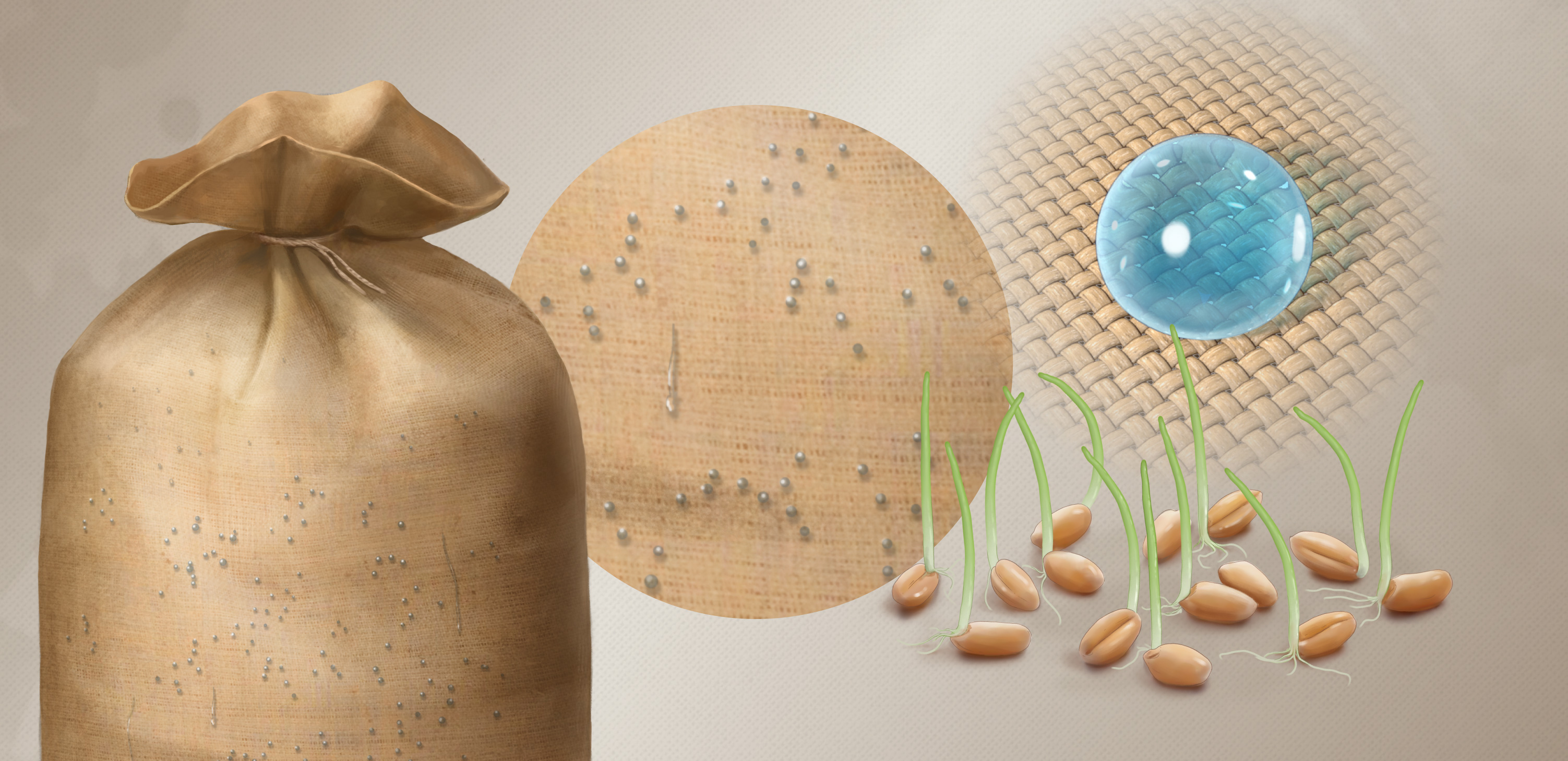Treated jute bags boost grain storage and other green goals

KAUST researchers develop a simple approach for grain storage that prevents moisture-induced damage and improves the seed germination efficiency. Photo: © 2021 KAUST; Xavier Pita.
Taking inspiration from water repellent surfaces in nature, KAUST researchers have pioneered a simple surface treatment for traditional jute storage bags that prevents moisture-induced damage to stored grains.
Each year, up to one-third of harvested grains are lost because of environmental factors such as moisture, fungi and pests. In developing countries, cereal grains, such as wheat, rice and maize, are staple foods, but on a calorific basis their losses can be as high as 60 percent due to moisture damage. The strong hardwearing jute bags that underpin traditional grain storage, particularly in rural and developing regions, have an Achilles' heel — they absorb and retain moisture. Often, the storage infrastructure in places of high humidity (or rainfall) is inadequate to prevent moisture from seeping into these bags.

Follow this link to see a visual explainer describing the treated jute bags. Photo: © 2021 KAUST; Xavier Pita.
"From an ecological and practical perspective, improving an extensively utilized biodegradable material like jute is ideal," added Mishra.
Jute is a plant-based product composed of water-loving components such as cellulose. The researchers treated jute with an alkali to roughen its surface and alter its surface properties. They then added a very thin layer of paraffin (candle) wax to the bags, before testing their water repellency under simulated rain and relative humidity ranging from 55 to 98 percent.
The grain storage experiments, which lasted two months, revealed that seed moisture content reduced by up to 7.5 percent in wax-coated bags, and the seed germination efficacy after storage was up to 35 percent higher than in seeds stored in ordinary jute bags. Grains stored in the wax-coated bags experienced far fewer fungal infections, regardless of relative humidity. "Longer trials are needed to examine the efficacy and durability of the bags," Odokonyero acknowledged.
The wax-coated bags are reusable but could also create an organic mulch once they are no longer fit for storage purposes. The mulch could reduce evaporation in farmers' fields and add nutritional content to the soils.
"With comprehensive further trials, we hope to refine and optimize this wax-coating technique, with the hope that one day it can be rolled out at scale," said Mishra.
Related links
- Nature-inspired wax-coated jute bags for reducing post-harvest storage losses
- KAUST Life with Himanshu Mishra
-
KAUST Interfacial Lab

